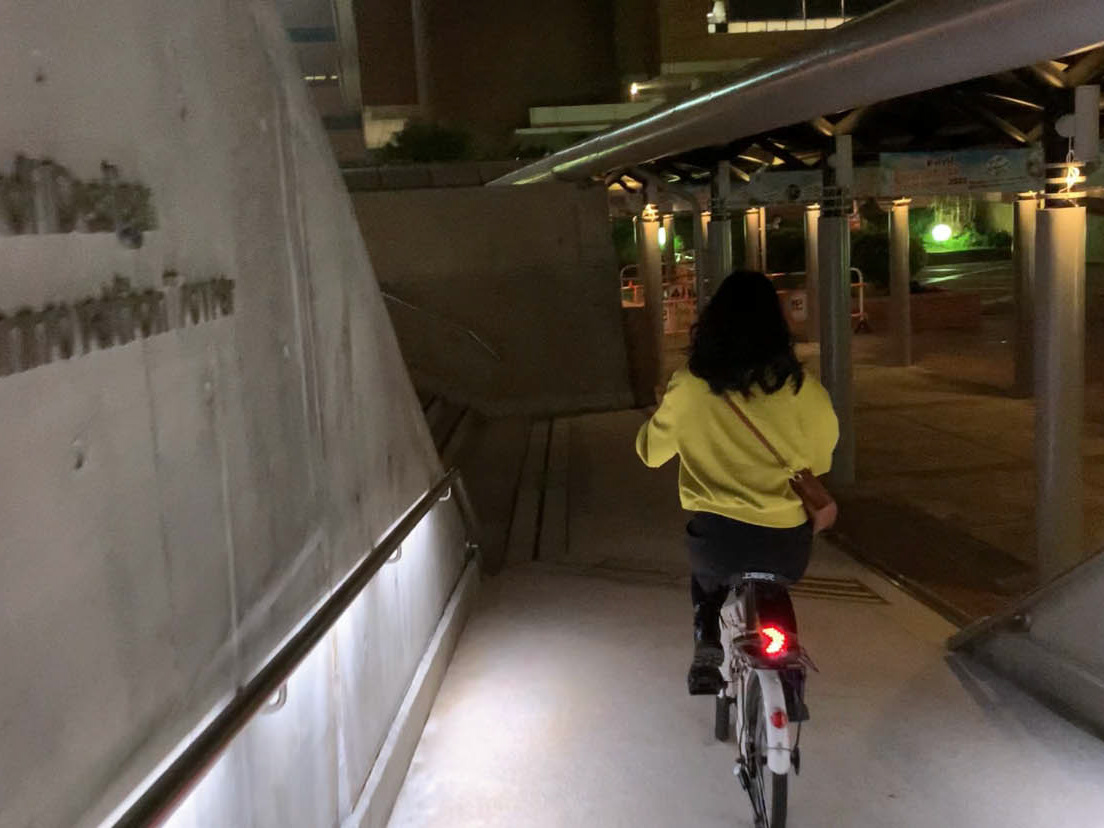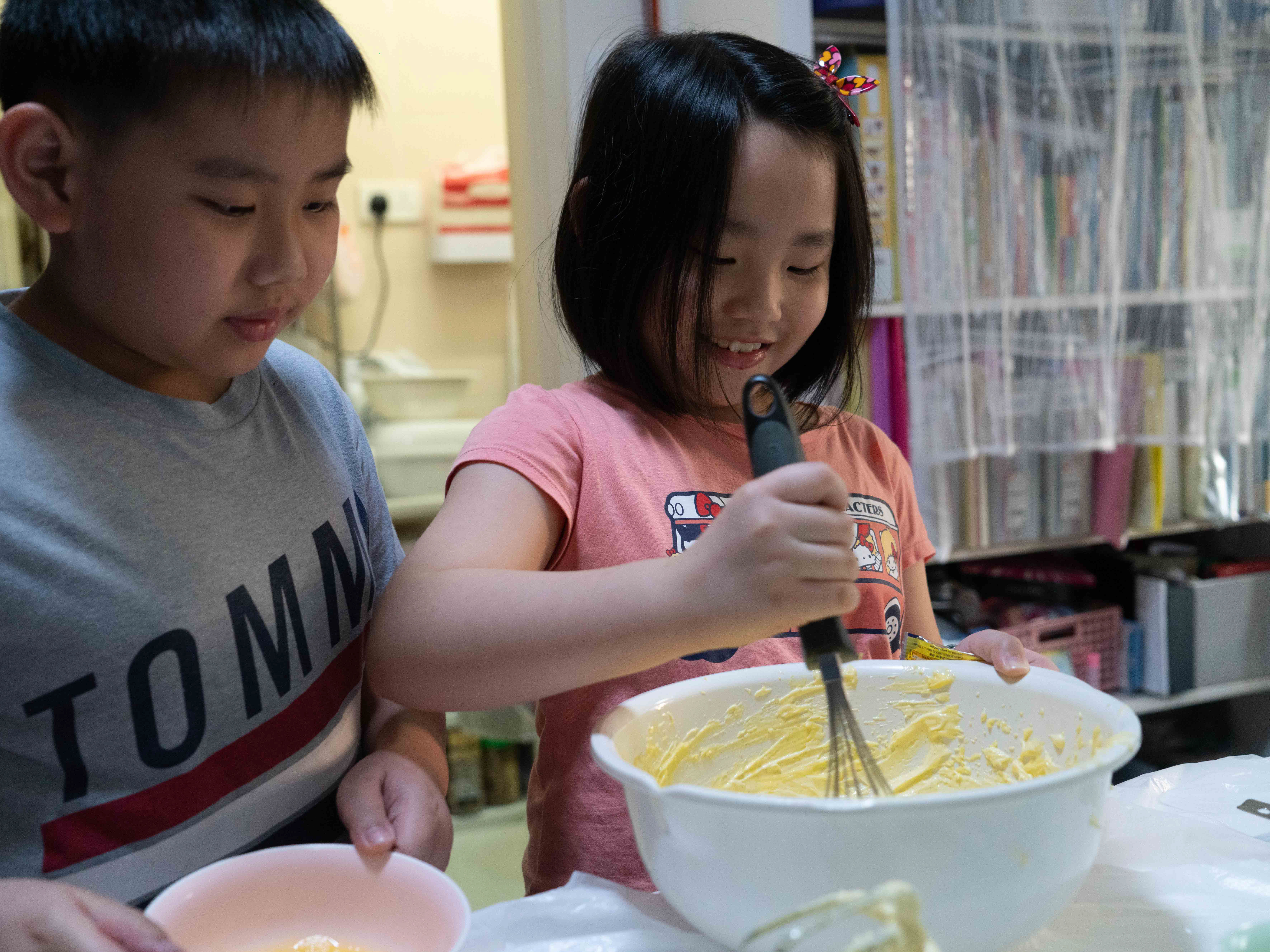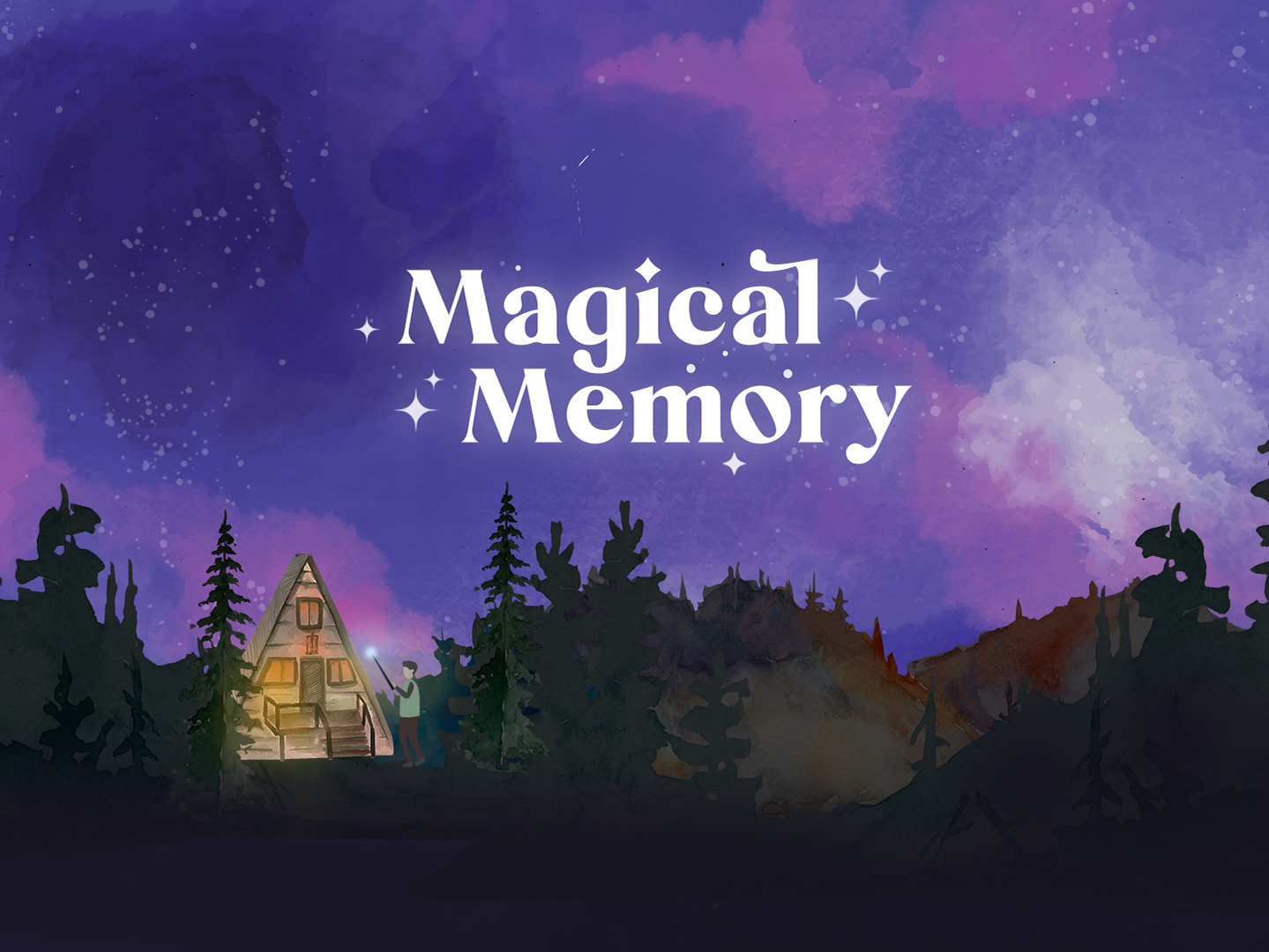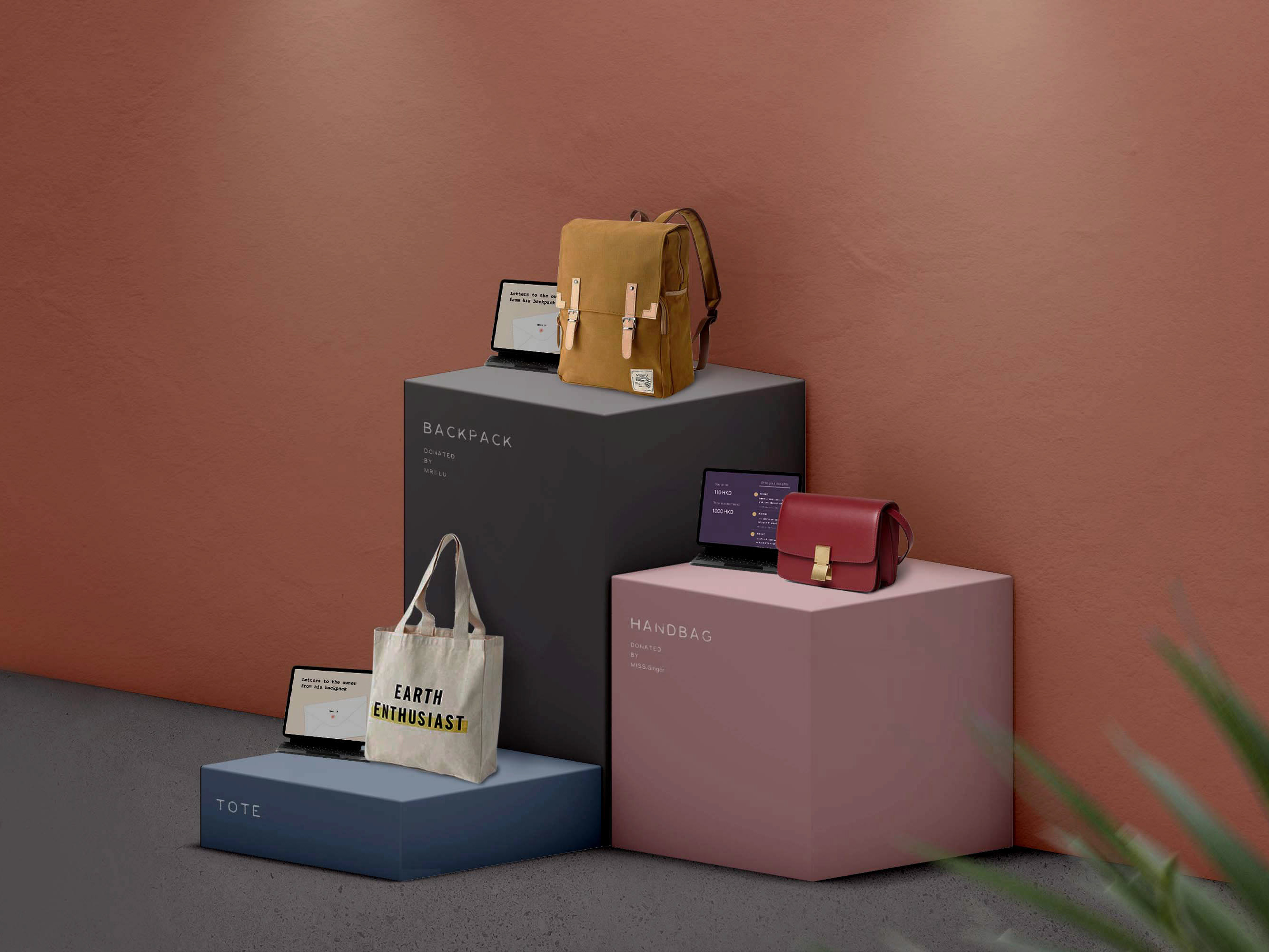The Walkthrough Video
Research Process
Background
Challenge
Over recent decades, rapid social development and urbanization have made people further detached from nature, with unnoticed loss of regular, direct, and meaningful contact with the natural world (Pyle, 2003; Miller, 2005).
However, connectedness with nature is closely linked to public health and environmental sustainability, which are two of the most challenging issues worldwide (WHO, 2015). Nature experience is beneficial to positive psychological functioning such as attentional restoration (Kaplan & Kaplan, 1995) and stress reduction (Ulrich et al., 1991). Moreover, nature connectedness significantly predicts pro-environmental behaviors. People who have more contact with nature are more engaged in eco-friendly actions (Mayer & Frantz, 2004).
Design Opportunity
Since more and more people live in cities and spend most of their time indoors, urban landscapes and citizens’ living environments play an increasingly important role in reconnecting to nature. The presence of urban green space particularly offers an opportunity to facilitate nature experiences, for its diversity, discoverability, and symbolic significance.
The project aims to use design and technology to gently intervene in people’s perceptive and behavioral transformations by encouraging them to notice, value, and have more contact with ‘nearby nature’ (Kaplan & Kaplan, 1995) within urban landscapes that will increasingly be the main location for our natural interactions, and meanwhile help people relieve stress through nature’s restorative effects.
Theoretic Framework
Nature Connectedness
Connectedness highlights humans' fundamental motivation for regular, positive interactions within a relational connection (Townsend & McWhirter, 2005). The biophilia hypothesis (Wilson, 1984) indicates that humans have a natural affinity to other living things and an innate tendency to seek connections with nature.
Connectedness with nature is experiential. It could be formed by culture and individual experiences, and it is interplayed with nature contact. More contact with nature can bring an increase in emotional connectedness, and people with greater nature connectedness may pursue more nature contact. Therefore, designed interventions increasing both contact and connectedness with nature are needed to achieve synergistic improvements to human and planetary health.
Biophilic Indicators and Pathways to Nature Connection
To systematically examine possible routes, Lumber et al. (2017) conducted two online surveys around biophilic values, followed by a walking intervention with activities testing the identified pathways to nature connectedness (see the below table for the summary of biophilic values and pathways identified by Lumber et al.).
Case Study
Inspired by My Naturewatch (Gaver et al., 2019), the camera is a potentially effective form of design intervention. It functions as a bridge and visualized recorder of the relationship development between users and the environment, and people's direct contact with nature can increase through capturing photos.
Case study1 - My Naturewatch (Gaver et al., 2019)
The other design implication conveyed by the My Naturewatch project is the value of a self-made process, through which participants acquired more sense of involvement and engagement, so the form of a DIY toolkit has also been considered. Many of us have played with kaleidoscopes and used them to observe the natural world, especially during childhood. The geometric patterns seen from the prism are very aesthetically and symbolically valuable, and the limited perspective can stimulate people's curiosity and imagination.
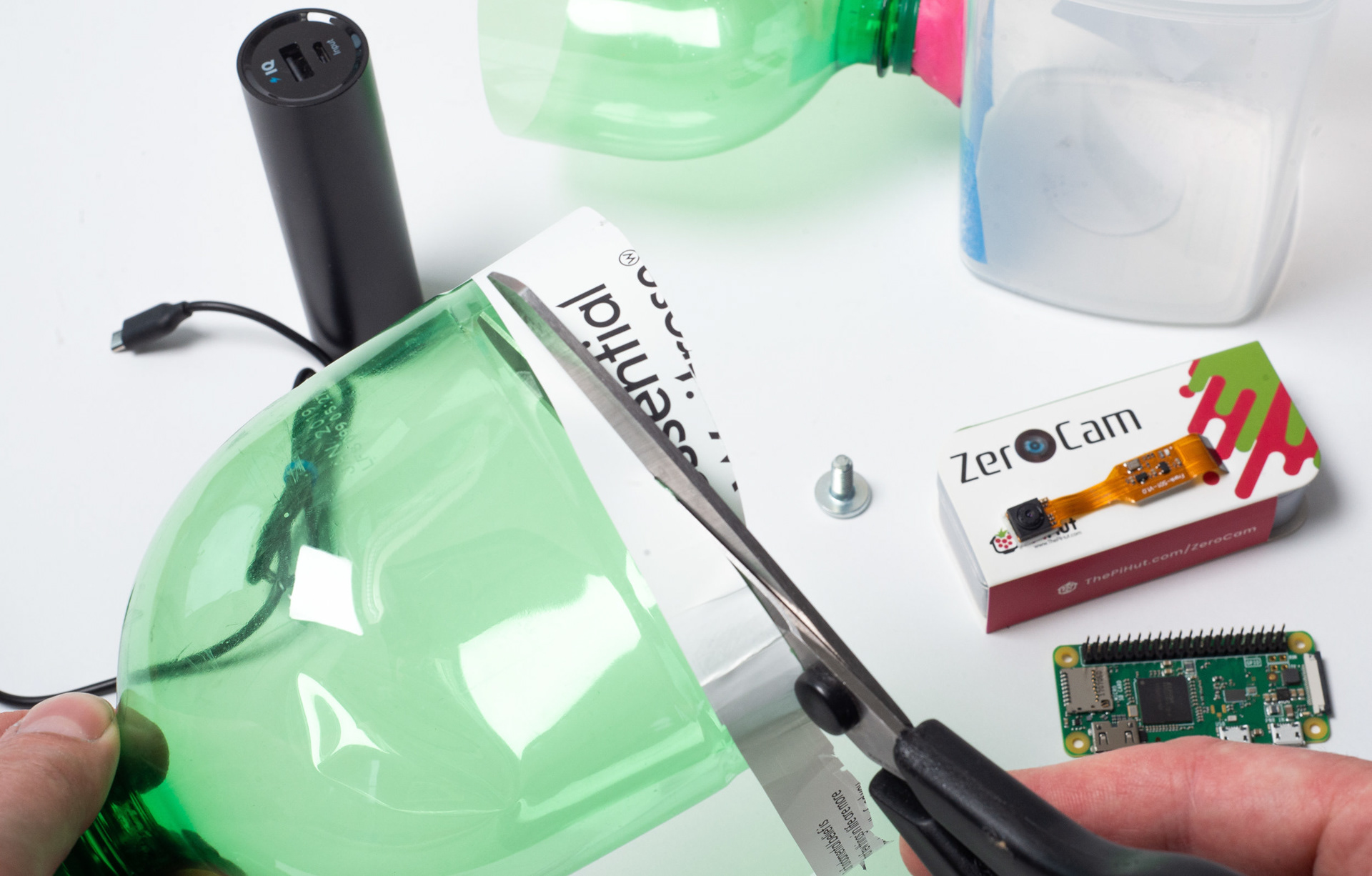
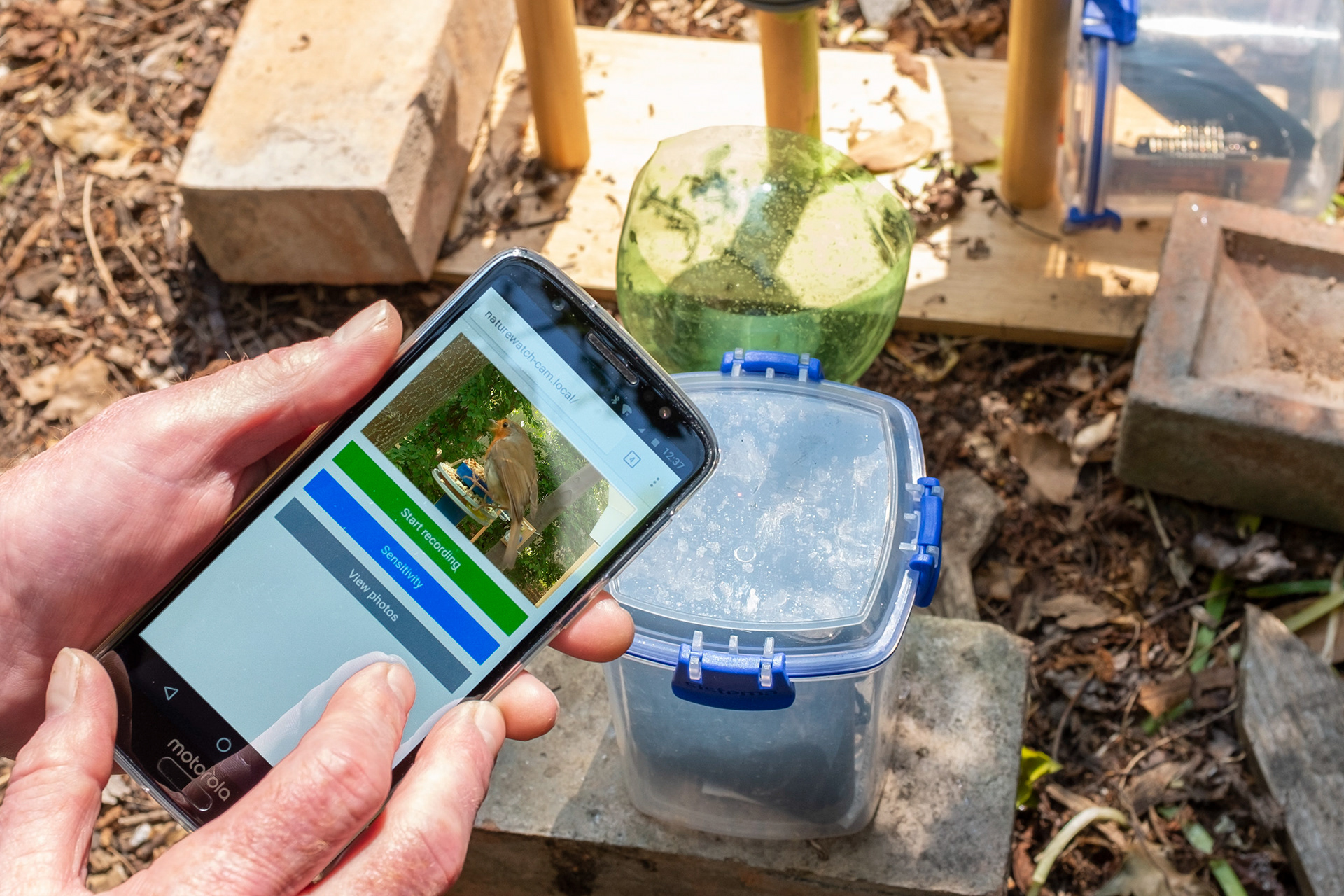
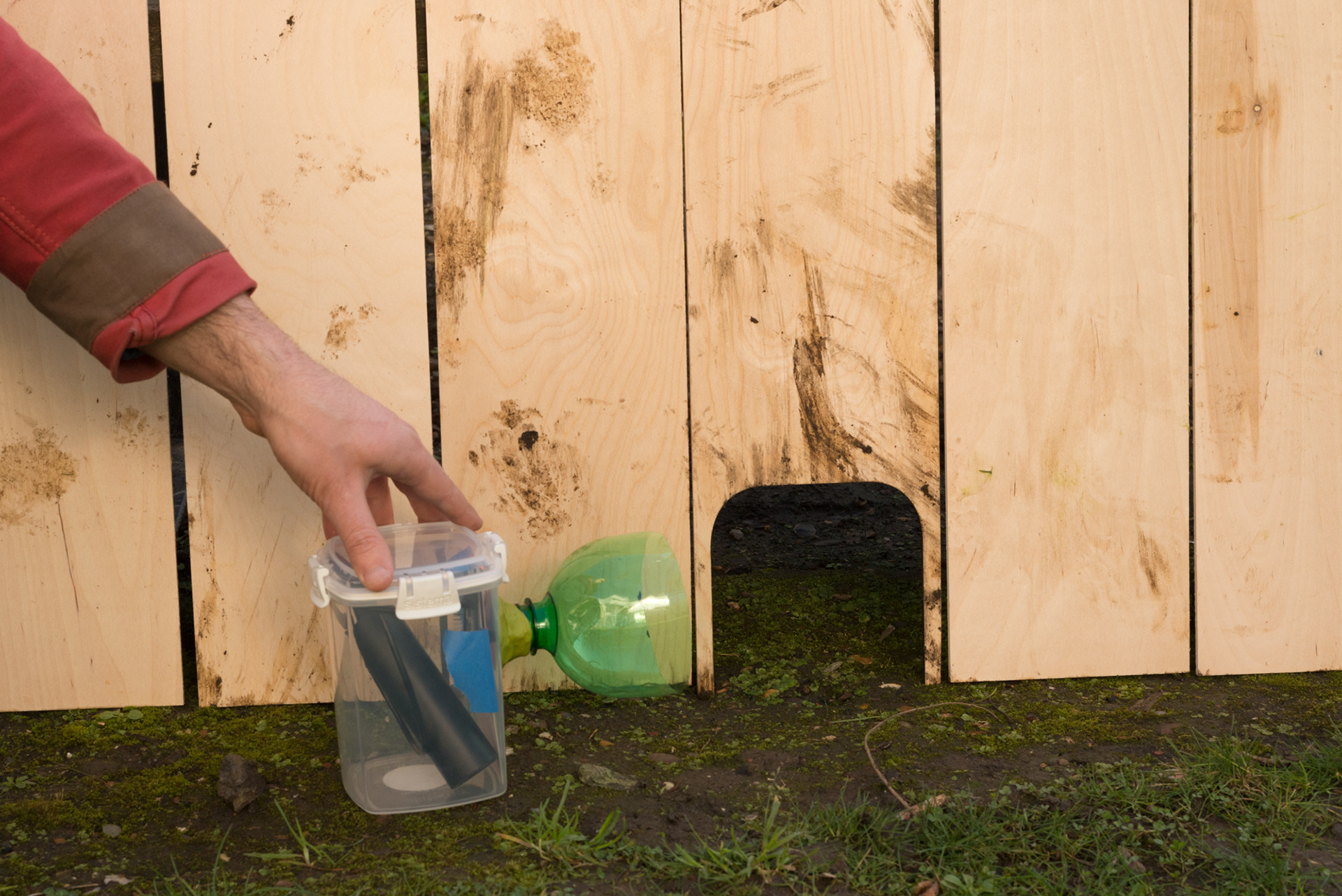
Probing Study
Methodology
I chose cultural probes study as the form of first-hand research. It can well support the purpose of testing initial design ideas. Probes can be shaped into tangible interventions that serve as simple prototypes and elicit informative responses. As an open-ended research method that values inspirational stories rather than practical information, it can well support study objectives and the topic of natural connection. Nature connectedness is an abstract, subjective, experiential, and emotional construct, which is more suitable to be investigated by qualitative and open-ended research that has a certain time span and allows continuous daily interaction.
The Connectedness to Nature Scale (CNS) designed by Mayer & Frantz (2004) and Inclusion of Nature in Self (INS) scale (Schultz, 2002) graph were used to quantitatively evaluate the intervening effect of initial design ideas in the form of pre- and post-surveys.
1. Doodle Book 🎨
This is a drawing notebook for participants to doodle their thoughts, aiming to get to know their opinions on nature, what they like about nature, their opinions on their relationships with nature, as well as their living environments.
2. Postcards ✉️
Six postcards were included in the cultural probes pack with three different themes: childhood, present, and future, to get to know their impressive childhood experiences of interacting with nature and their perceptions and aspirations regarding nature and life.
3. Encounter with Nature 📷
Each pack of probes includes a disposable film camera (the upper limit of shots is 27), and participants were told to use the film camera to take pictures of nature they encounter every day. “Nature” could be everything they perceived as nature or what they thought was related to nature.
4. DIY Kaleidoscope 🔮
The kaleidoscope toolkit concludes with materials for making a simple kaleidoscope, such as paper tubes, tapes, and mirrors. Participants were asked to make the kaleidoscope by themselves with the reference of the instruction video and create patterns with different materials.
5. Sounds of Nature 📻
Since natural experiences are multisensory, whether the sound of nature can be developed as one of the design intervention’s sensory characteristics was also be tested. Participants need- ed to record sounds of nature they hear every day via phone or any other device.
6. Take Care of a New Friend 🌱
A small potted plant was given to each participant as a gift in order to see whether this new life form in their daily routines (all participants don’t currently grow plants in Hong Kong) would affect their emotional connection to nature.
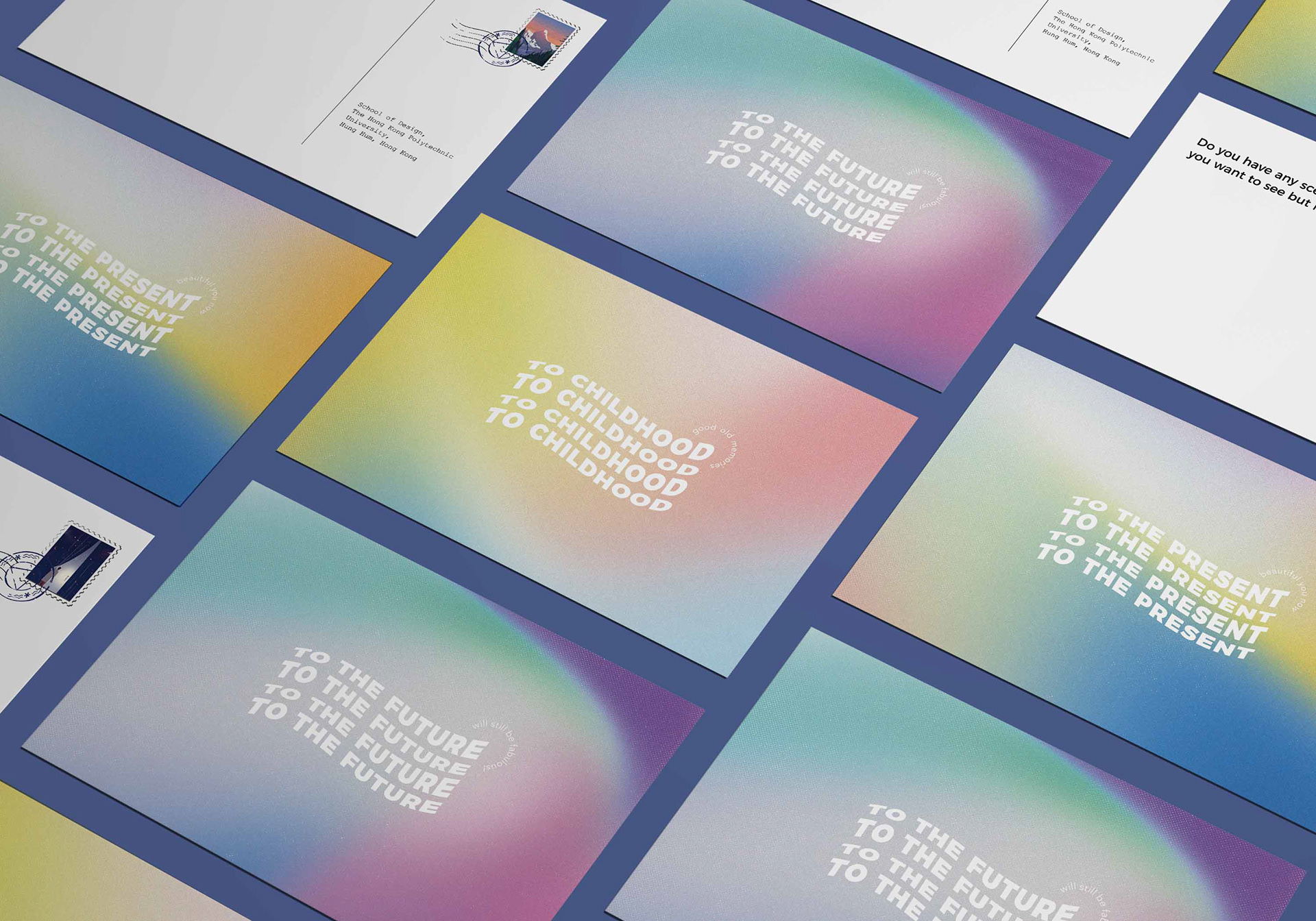
Postcard Design
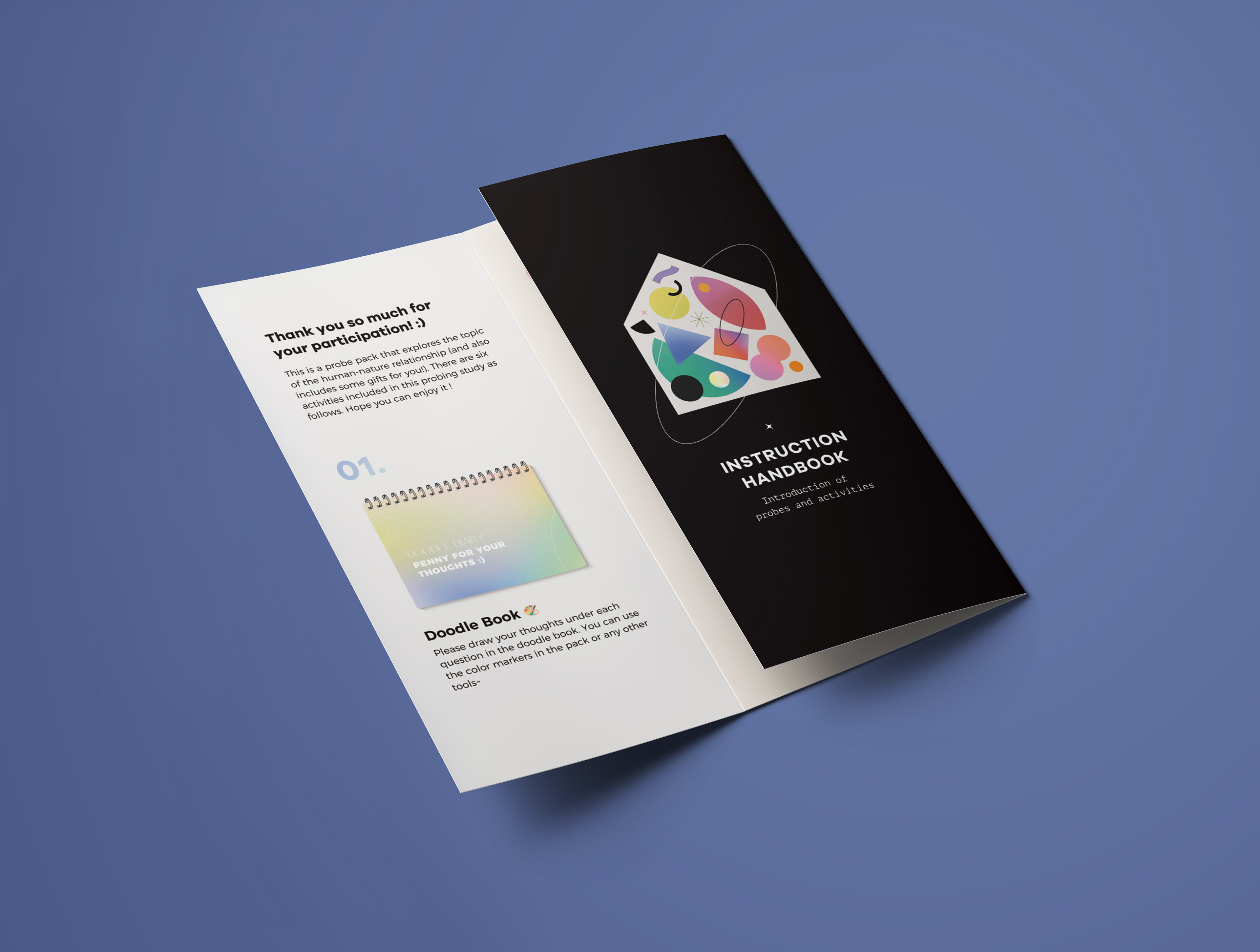
Instruction Handbook
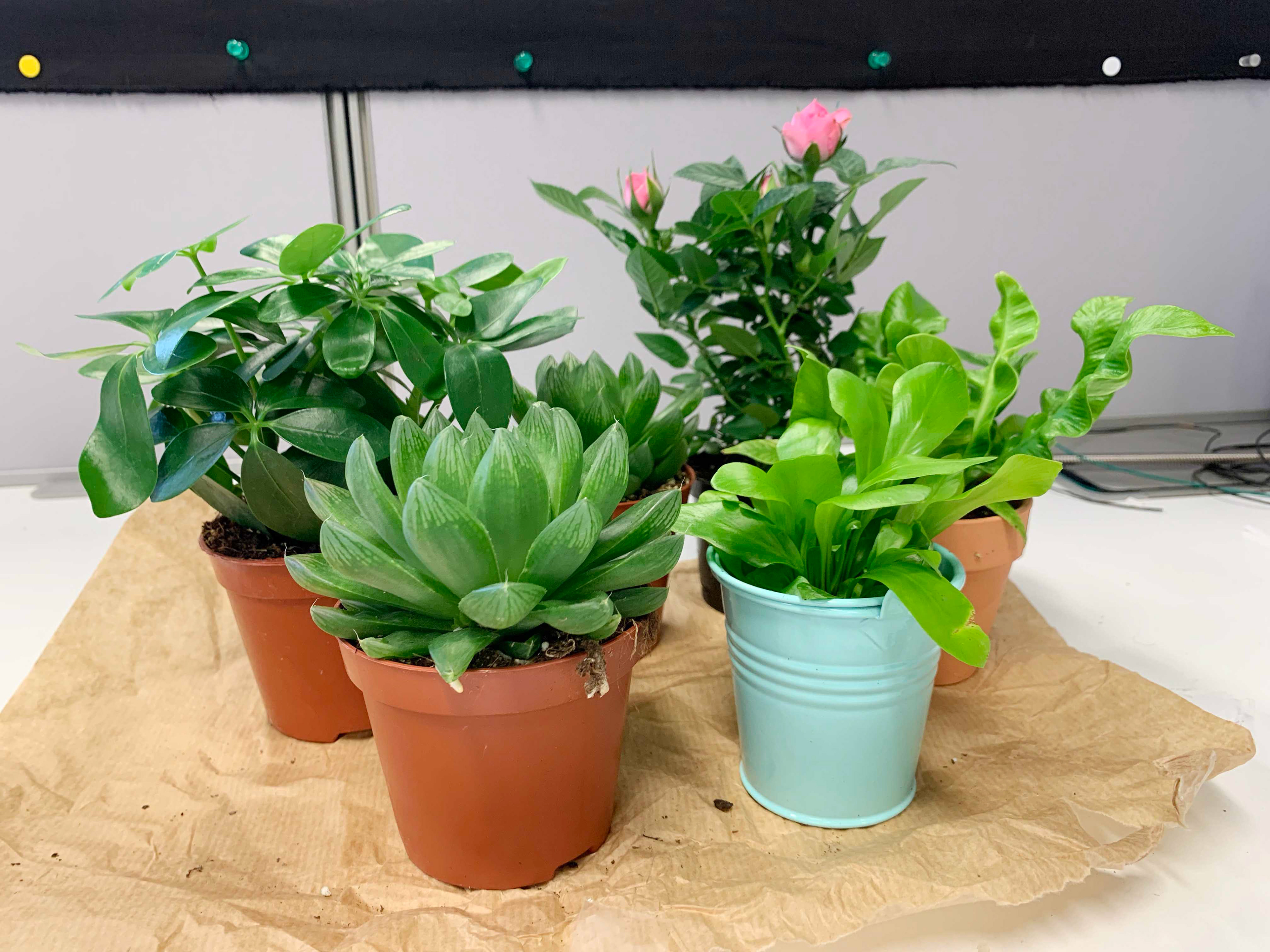
Potted Plants
Probing Study Results
I have received rich and inspirational feedback from the probing study. The overall result is that probing activities successfully promote participants’ sense of connectedness with nature according to post-interviews responses, whereas no obvious conclusions were revealed from questionnaires.
📷
The major contributor to the enhanced nature connections is “Encounter with Nature”, which is participants’ favorite activity. Through taking photos of nearby nature, they discovered natural things around living and working spaces that were neglected before, making them pay more attention to the urban natural world with a promoted sense of connectedness.
🔮
As for the kaleidoscope toolkit, the threshold for self-made varies from person to person; some participants consider the DIY process troublesome, while some think it is even more interesting than viewing patterns. All participants think that the views from the kaleidoscope have aesthetic value; however, its strong sense of regularity will make them feel it has little to do with nature.
📻
Recording sounds of nature was difficult in the urban context. The recordings sent by the participants were full of urban noises, such as the sound of cars, horns, construction, which made participants feel strong separateness from the natural environment.
📑
No apparent patterns of changing connectedness with nature were found from the pre- and post-questionnaires based on the CNS and the INS scale, whereas positive feedback regarding increased contact and connection with nature was responded from post-interviews.
Some of the feedback collected from participants
Insights and Design Criteria
1. Perception of Nature
Overall, nature has two significant characteristics for participants. First, it is contrary to artificial things; nature conveys the feeling of being original, pure, and beautiful. Second, nature involves living forms. Some participants used “organism” to describe nature; for them, nature is alive, or at least vitality is one of the first things they think about nature.
2. Separatedness from Nature
The strong feeling of detachment from nature can be observed from the probe’s feedback, and this could be explained in two aspects. The urban living context with modern landscapes, city noises, and busy lives make participants hard to feel connected to the natural environment.
3. Nature Value
Nature's aesthetics and restorative effects are particularly valued by participants. Their appreciation of the natural beauty of variability, uncertainty, and seasonality is shown from their photos and drawings. Within urban landscapes and living environments, greenspace, and plants are regarded as crucial elements to create a natural connection and a relaxing atmosphere.
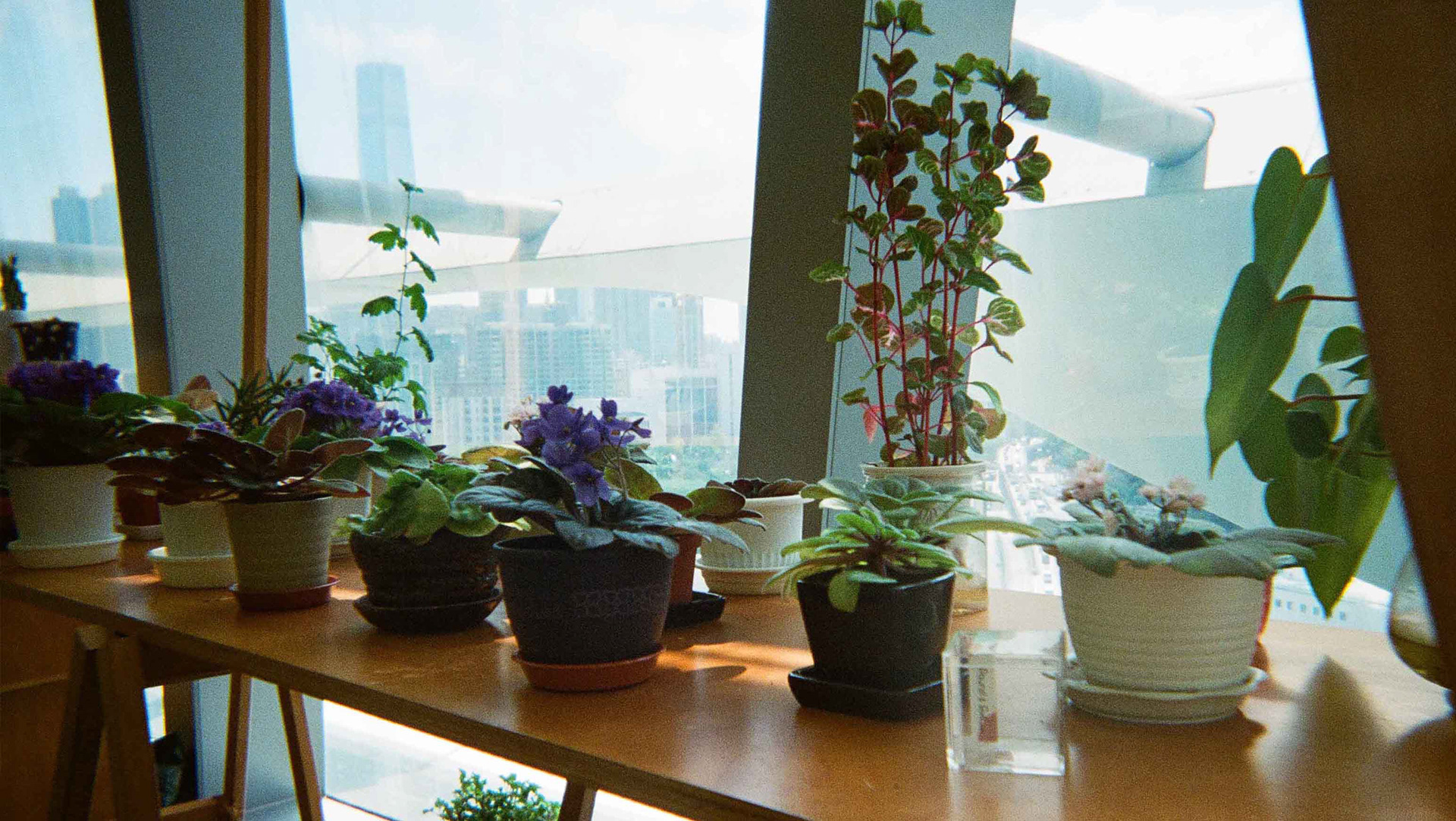
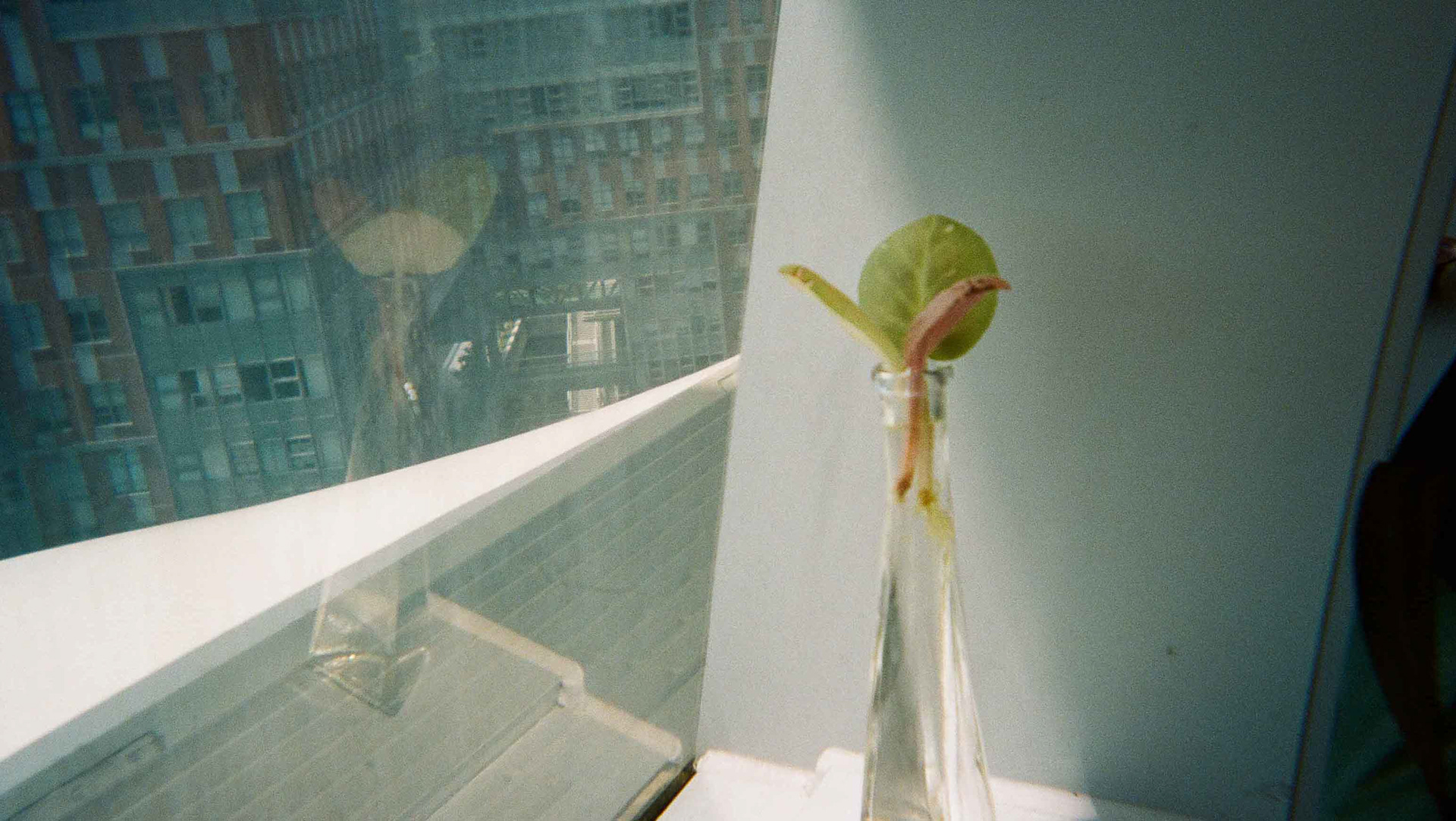
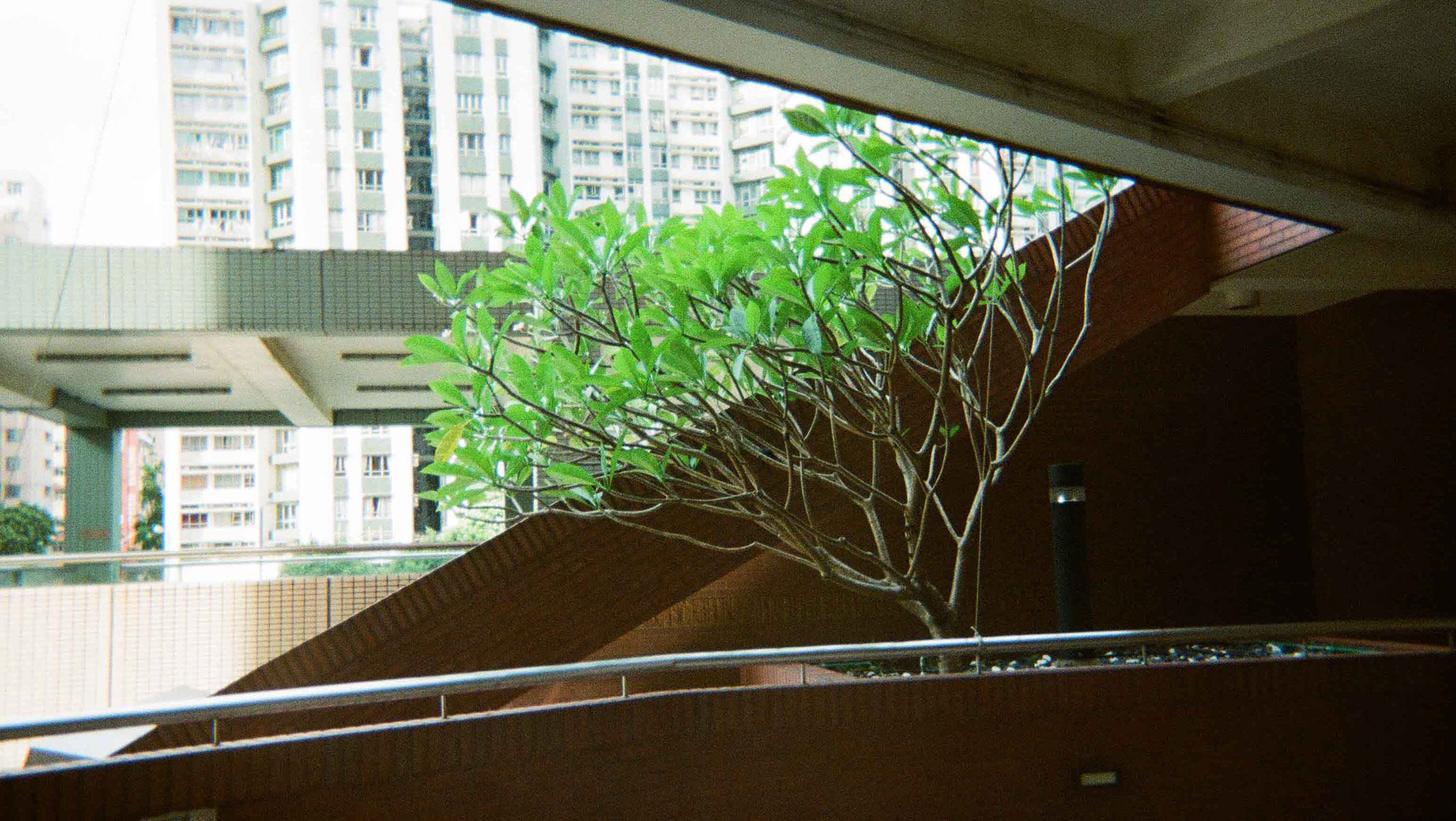
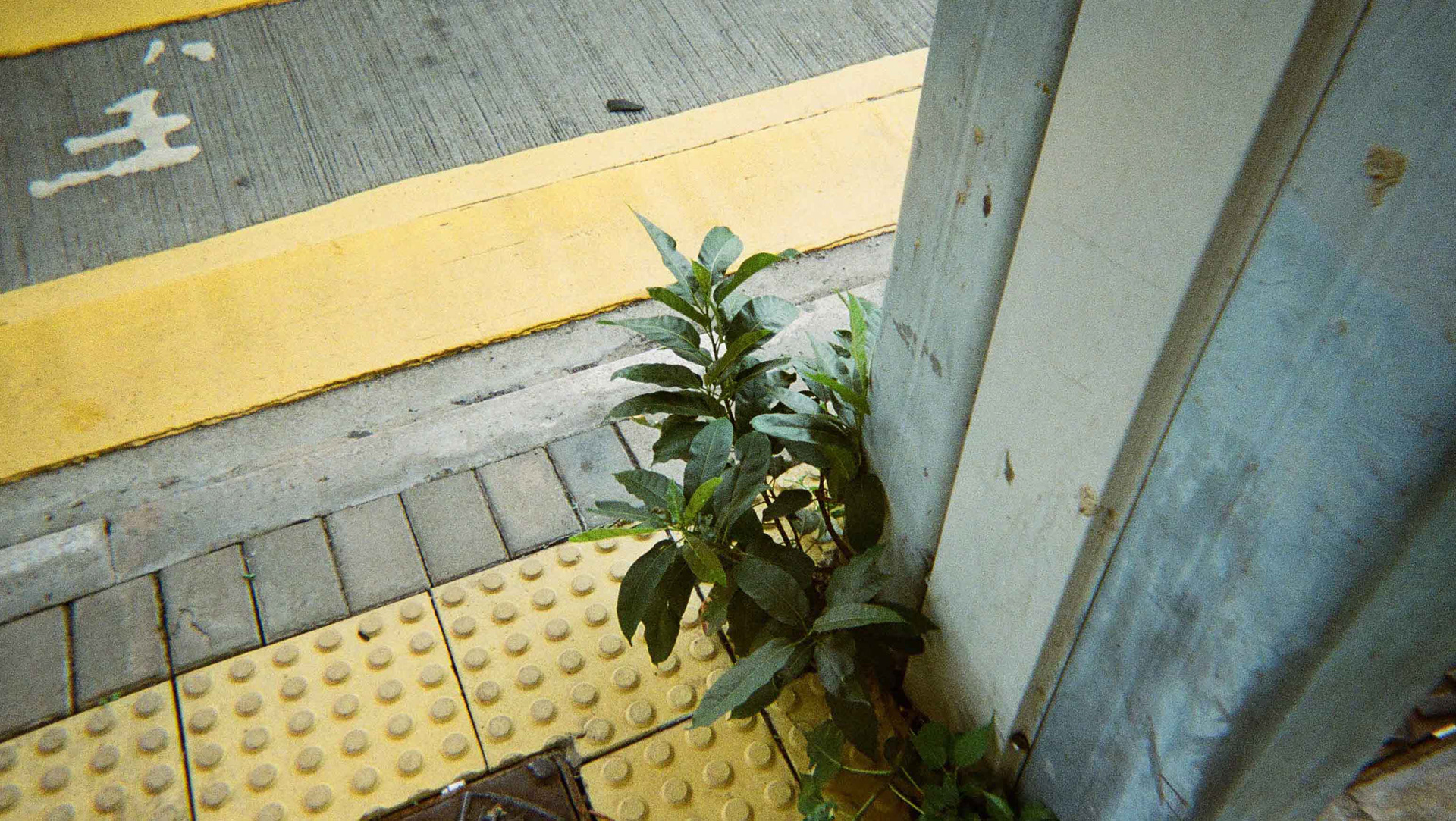
Some of the film photos taken by participants
Concept Development
Behavior and Metaphor
Some nature lovers are keen on collecting natural things, such as leaves, shells, insects, etc. As the memento of nature contact, the collection of natural things could positively impact nature connectedness. As a commonly used container for collecting natural things, the jar is a good metaphor for collection and keeping. Based on the probing study insights, the other possible metaphor is the growing tree that represents vitality and various natural characteristics.
To test the desired user behavior, I asked classmates to collect natural things during their daily routines for five days. They discovered and fetched different kinds of leaves and feel more connected to nature through the process of exploring nearby unnoticed natural elements. However, collecting actual natural items like leaves and petals has downsides. It is inconvenient to carry and store collected items. When the flowers and leaves perish, people’s desire to continue collecting will be weakened.
Final Concept
The final design concept aims to facilitate people’s daily contact with nearby greenspace to reconnect to nature and relax from the restorations brought by natural experience. It intervenes in people’s daily lives and is embedded in the living environment and utilitarian activity, gently motivating the perceptive and behavioral transformations.
The design contains two parts: the web app used to “collect” nature and the jar lamp used for delivering feedback and restorative effects. The user can “collect” plants by taking photos into the “portable jar”. This behavior combines nature collection with taking photos that have been verified to positively affect nature connectedness in the previous study. The identified leaves and flowers will appear in the jar, symbolizing successful collections.
The lamp consists of a tangible jar and a dry-looking branch. If the user has collected plants, the leaves or flowers will also appear in the tangible jar when turning on the lamp. The branch will grow with more branches and leaves according to the user’s contact behavior; the more contact with green space, the more lush the tree is.
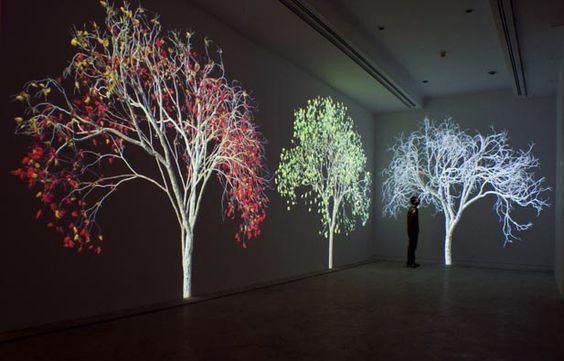
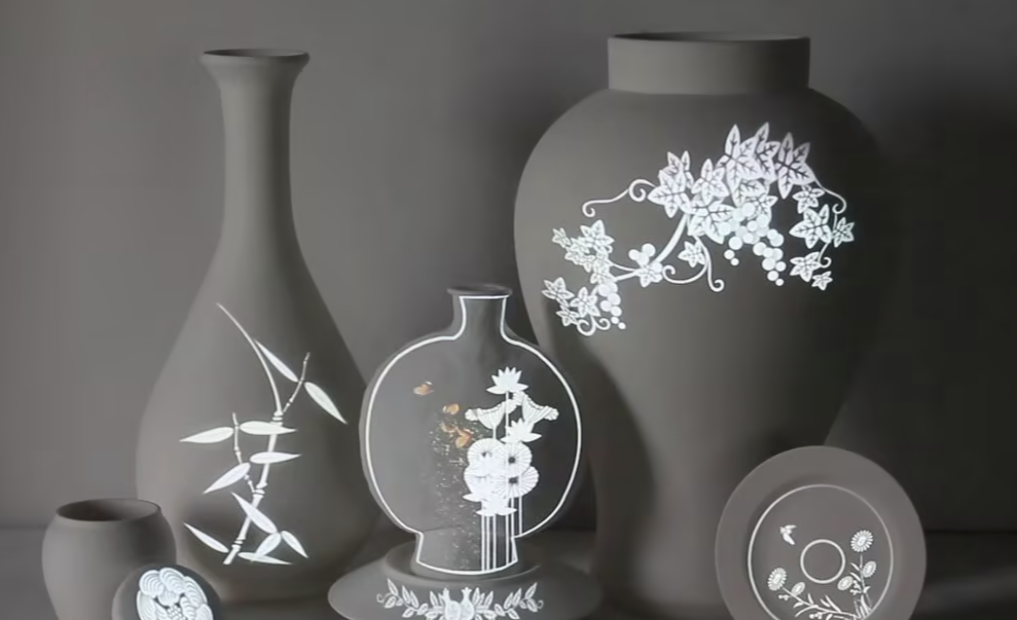
Deliverable references - projection arts
Prototyping and Testing
Web App
The web app serves as the “portable jar” to let users collect plants in urban environments. The collected leaves or flowers will appear in the virtual jar on the main screen, and more importantly, what has been collected will also appear in the tangible jar (lamp) at home. Two main functions were developed using HTML and Javascript coding and MQTT protocol to achieve this interactive process. (Project codes)
Plant Identification
Since there have to be visual outputs in the virtual jar after successful collections, plants need to be identified by images so that ideally, each kind of plant will have a corresponding output to symbolize being collected. Therefore, the Plant.id API has been adopted as an AI plant identification platform. It can identify almost 11,000 plant taxons, including flowers, trees, bushes, fungi, and lichens, sufficient for developing the prototype.
Ten kinds of plants in the PolyU campus were selected as testing samples since it is impossible to make each plant have a corresponding visual effect at this stage. Whenever the user presses the "confirm" button after taking photos or uploading the image, the web will send an identification request to the Plant.id API. The corresponding icons simulating the real plant will appear in the jar according to the returned JSON data of plant information.
Plant identification API
Plants in PolyU that used for testing
Remote Data Transport - MQTT
In order to make the collected leaves and flowers also appear in the tangible jar (lamp) at home, the MQTT protocol has been adopted, which is a lightweight publish/subscribe messaging transport for connecting remote devices. After each successful identification of plants, the plant information from the returned JSON data will publish from the web app in the JSON format.
Tangible Jar Lamp
Components Construct
The jar lamp consists of a jar with a LED light inside, a base with two switches, and a withered branch. The two touching switches are for turning on the light and forest sounds. Capacitive sensors that connected to ESP8266 devices were used to control the on and off. The data is also transported by MQTT protocol.
The jar lamp with a dry branch
The circuit diagram of the lamp and switch based on touching
Output Effects
The jar lamp will have corresponding visual and auditory outputs based on the contact behaviors (plant identification results). The visual changes were displayed through projection effects on the jar and the wall, creating a sense of the overlap of virtual and reality. Noodl was used to subscribe to the MQTT messages sent by the web app and ESP8266 devices. Similar to the web app output, icons simulating the real plant will appear in the jar according to the returned JSON data of plant information.
Noodl - to subscribe MQTT messages and control different outputs
In the design concept, the branch will grow with more branches and leaves according to the user’s contact behavior; the more contact with green space, the more lush the tree is. In order to visualize the growth of the tree more realistically and aesthetically, Blender was used to do the 3D modeling and animation rendering. Moreover, the trees were naturally swinging in the wind to deliver a more relaxing sense.
The counter in Noodl will count the times of successful plant identifications (the contact behaviors), the animation of the tree will automatically change according to the increase in the number of counts. More immersive forest sounds will synchronously play if the sound switch is on.
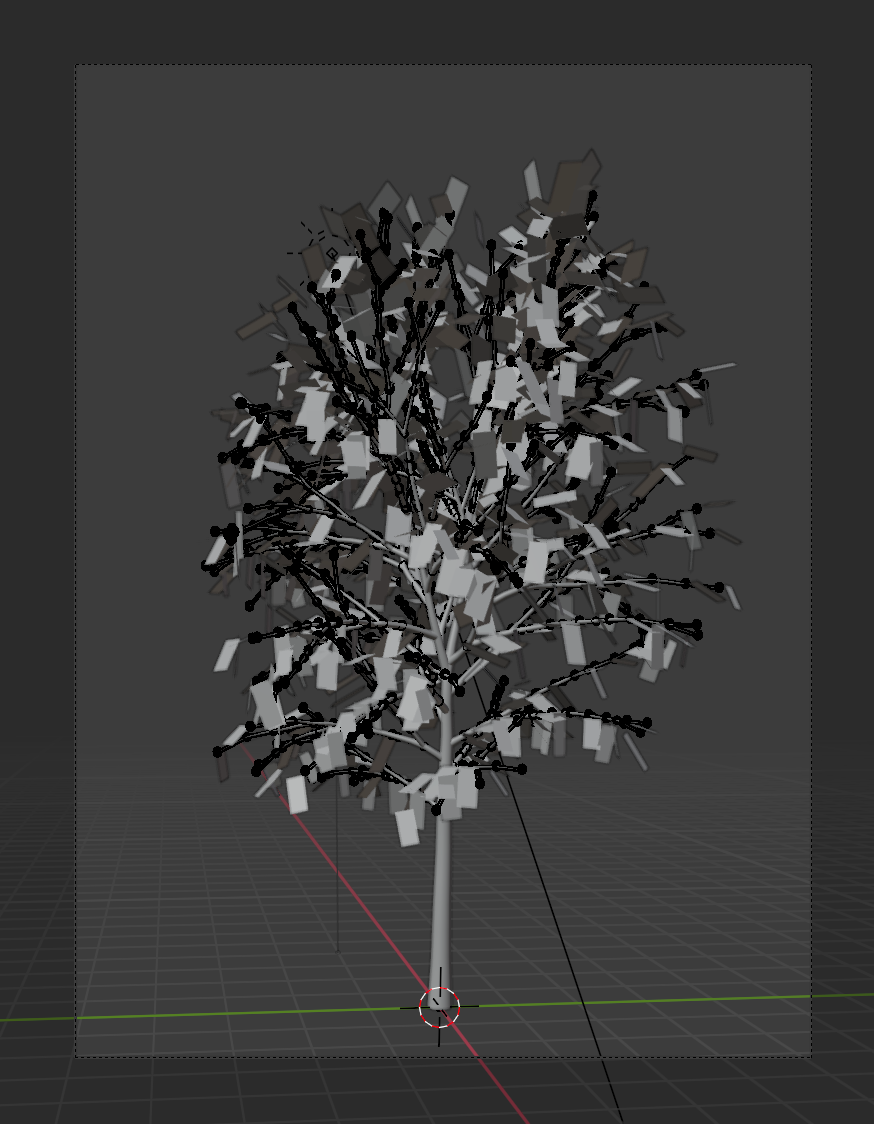
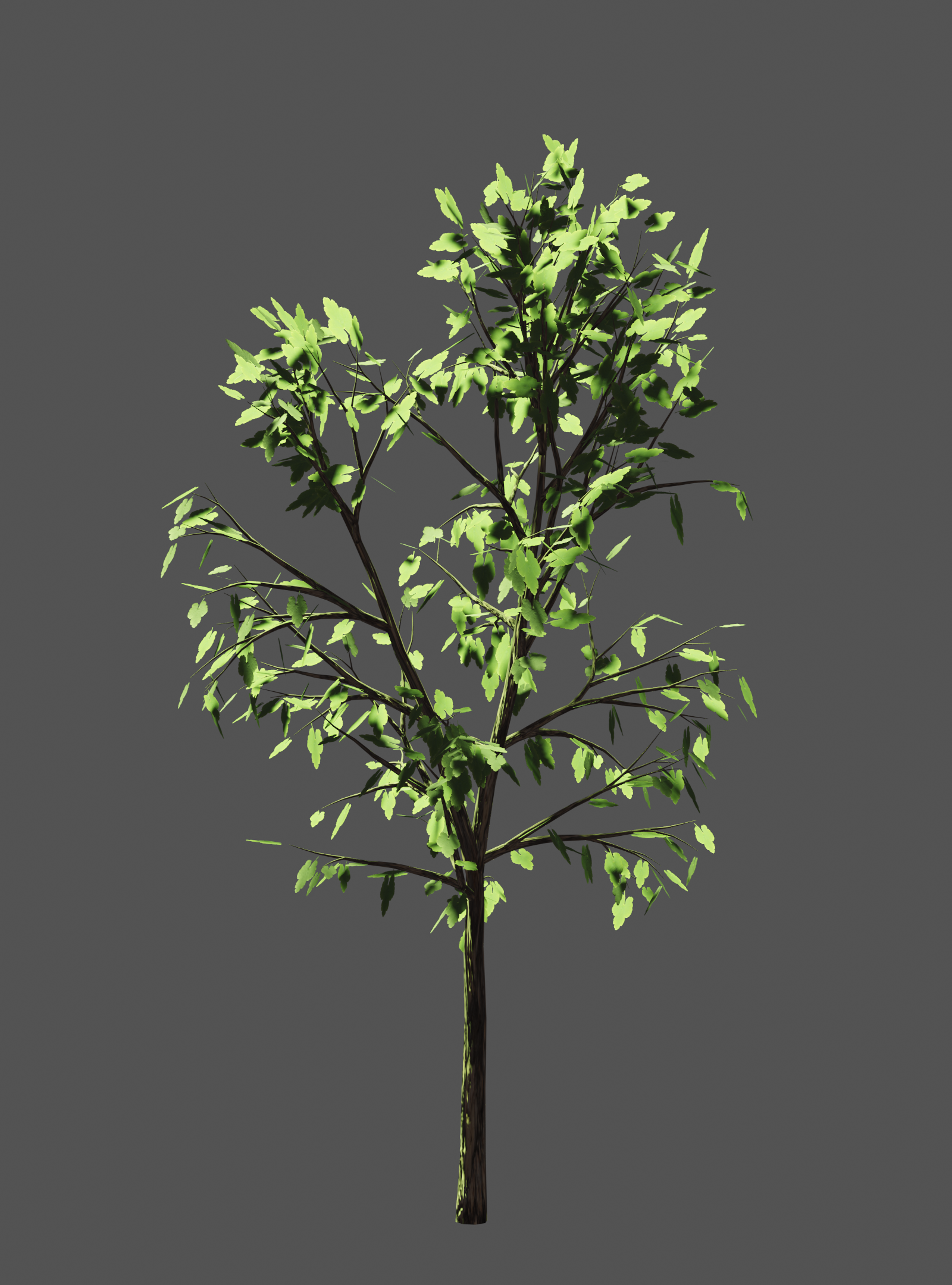
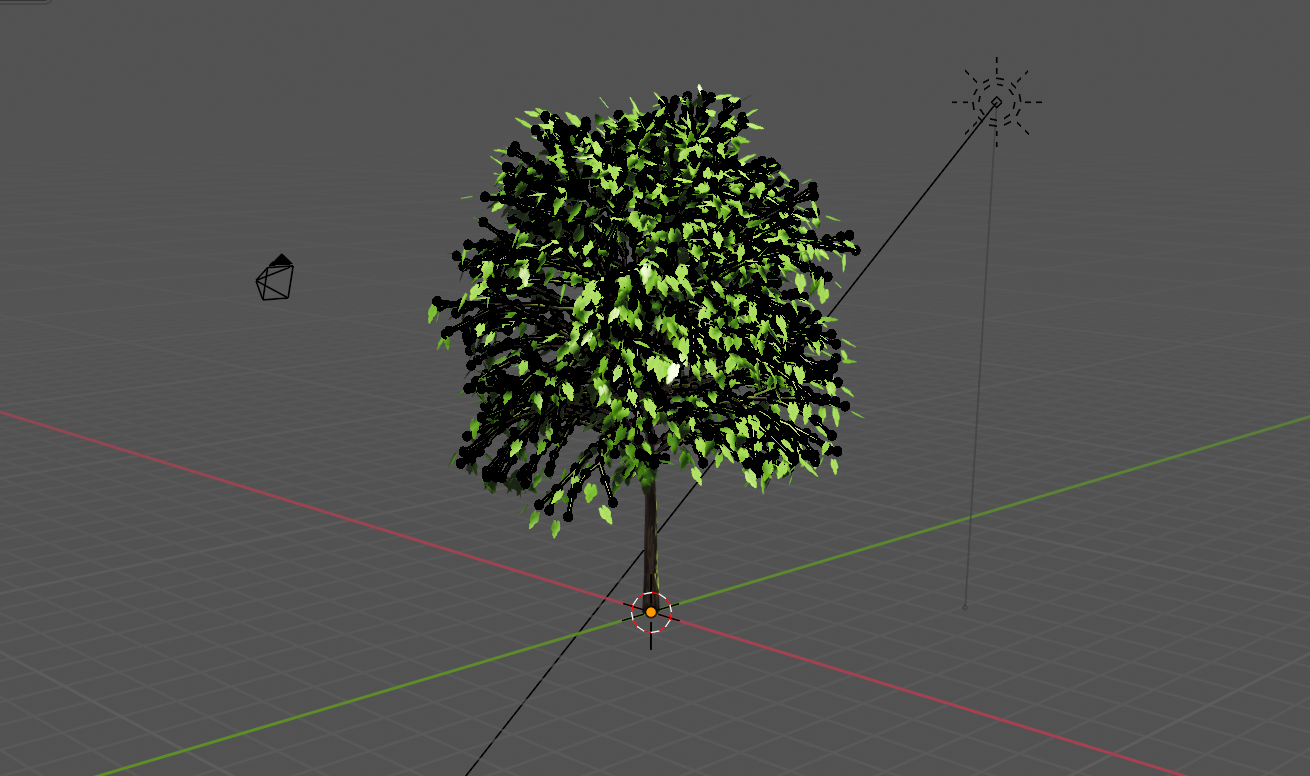
Deliverables
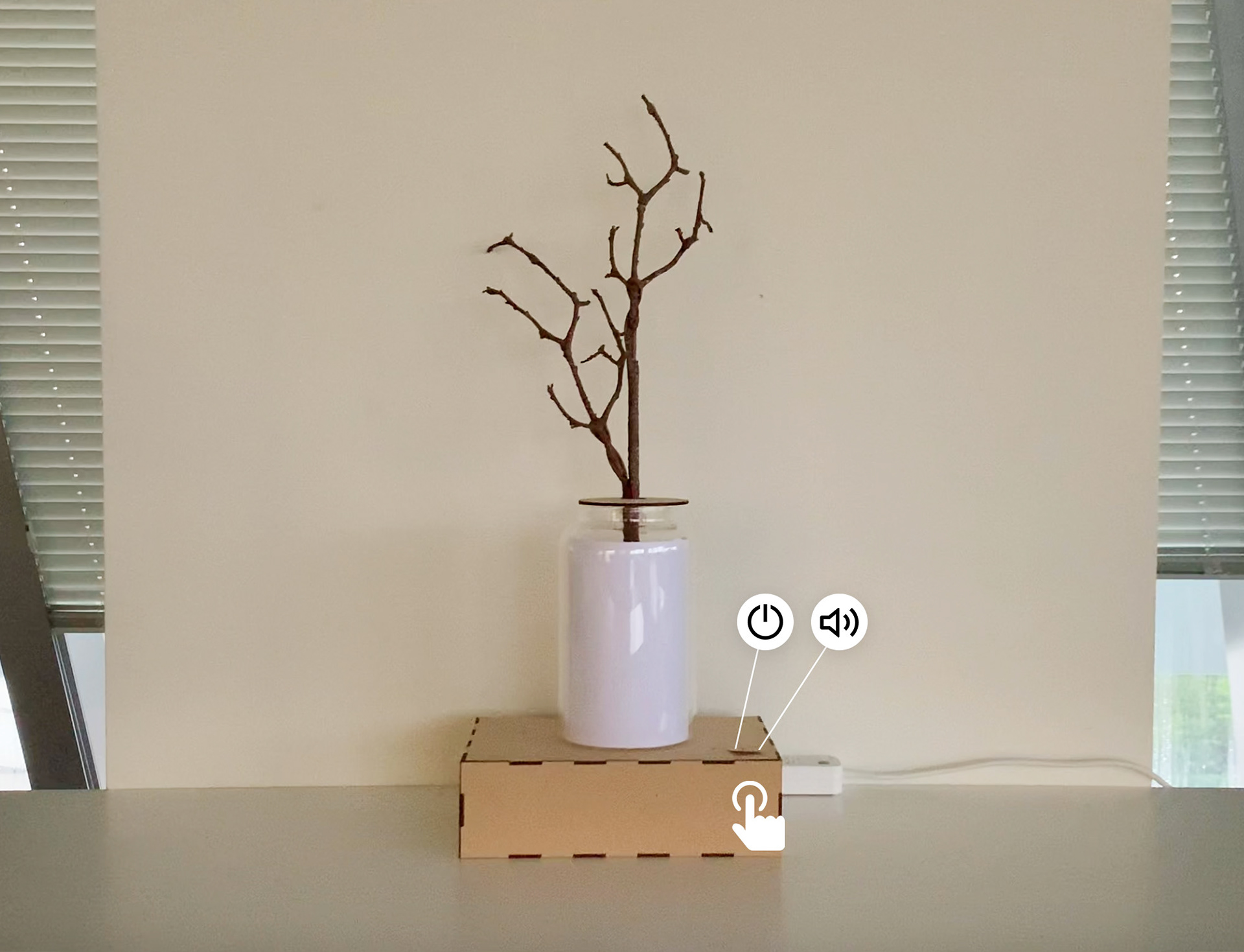
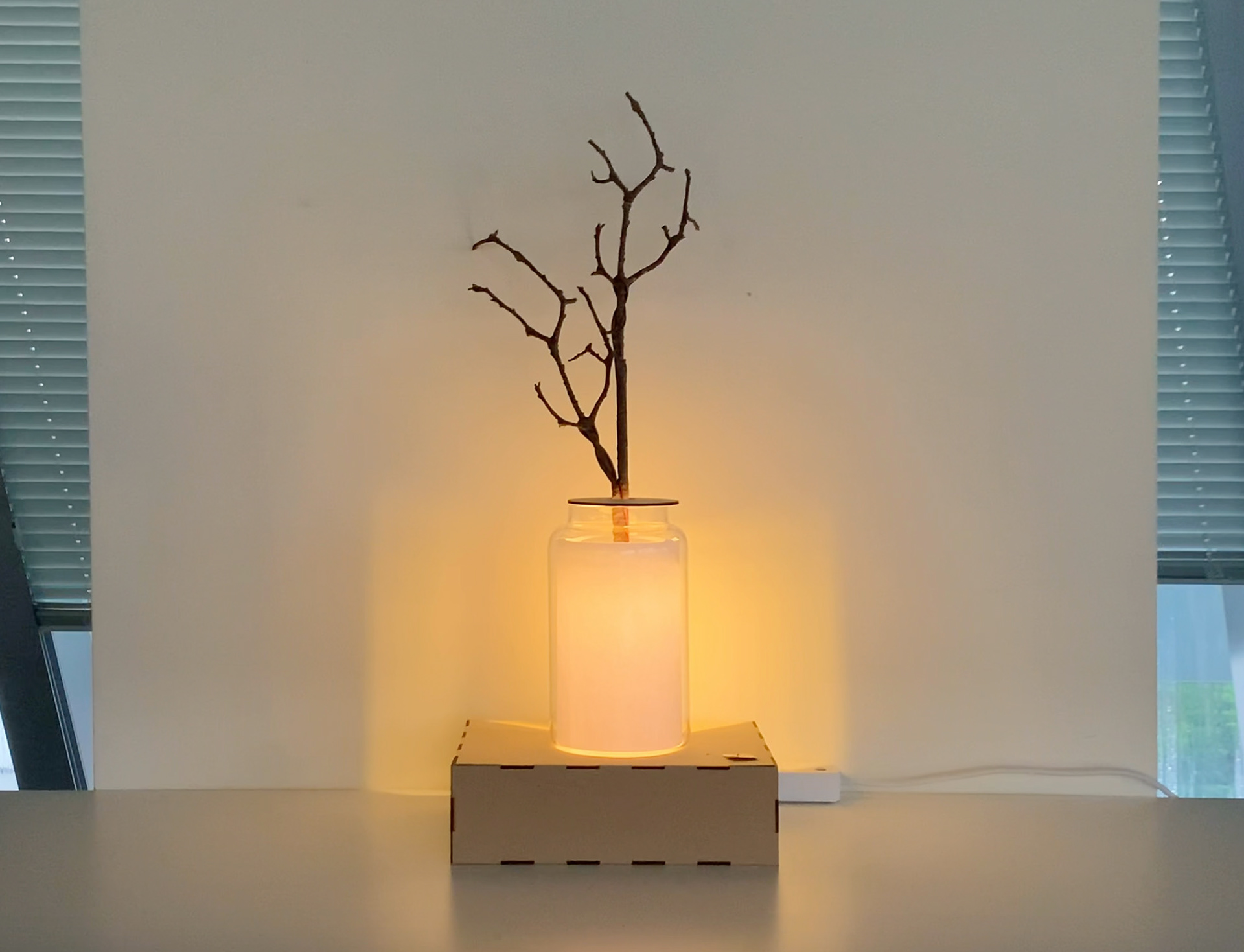
The tangible jar lamp with a dry branch. Users can touch the two switches to turn on the lamp and forest sound.
If the user has collected plants by the web app, the leaves and flowers will display in the tangible jar, and the tree will grow (projected animations).
The more contact with green space, the more lush the tree is, which will be swinging with the wind.
Users can also turn on natural sounds to relax. More collections of plants will generate more immersive forest sounds along with the growing tree.
User Testing & Discussion
The testing of the prototype was conducted in the PolyU campus with five participants aged 23 to 28 years old. Before the prototype experience, participants were asked to finish the pre-survey with factual questions about their daily contact and connectedness with nature.
The official testing process involved both indoor and outdoor environments. Participants needed to collect plants via the web app on the campus and then observed and interacted with the lamp placed in the studio. After experiencing the prototype, the post-questionnaire and post-interviews were used to evaluate the effect and get to know the participant’s feelings.
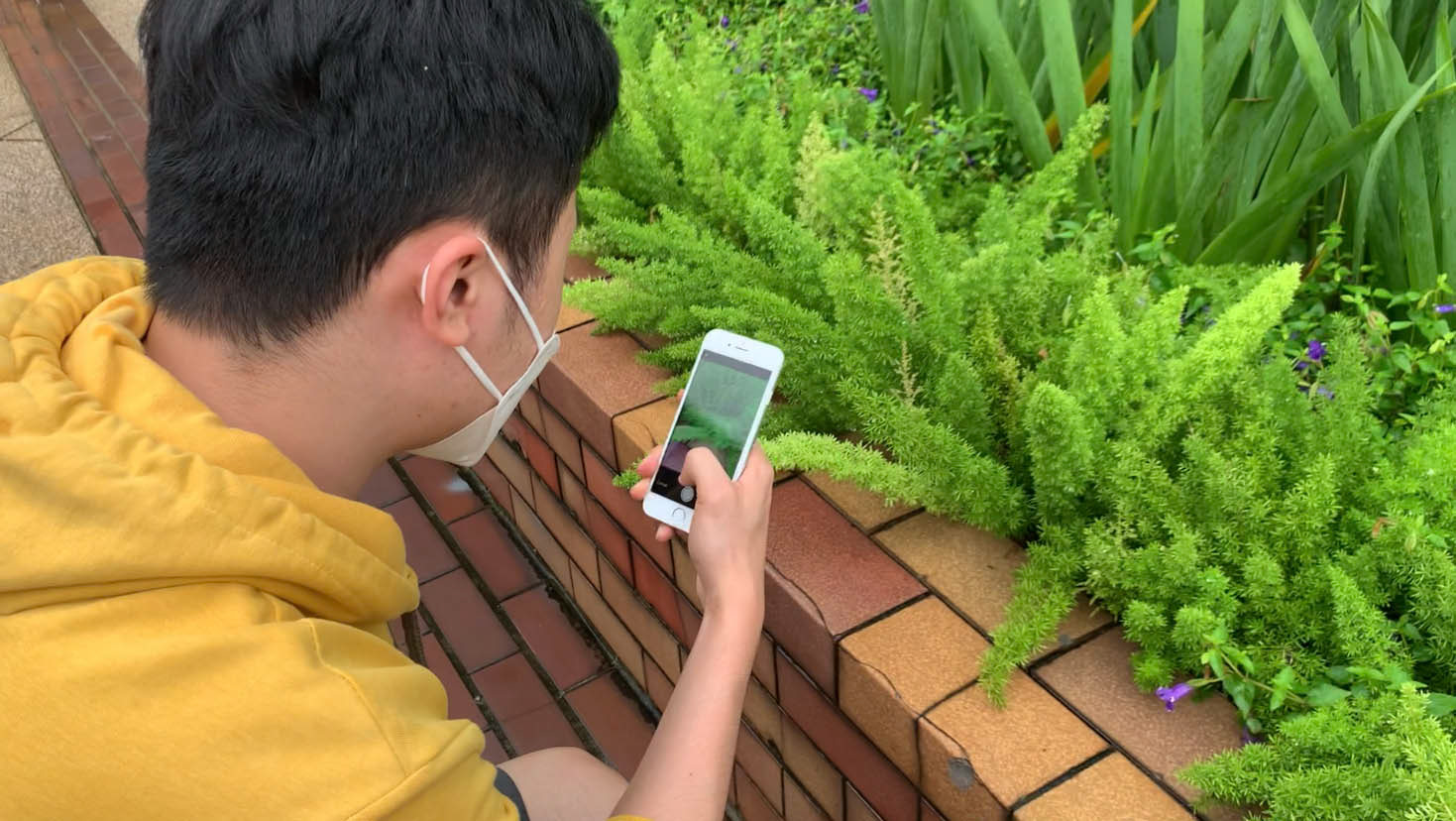
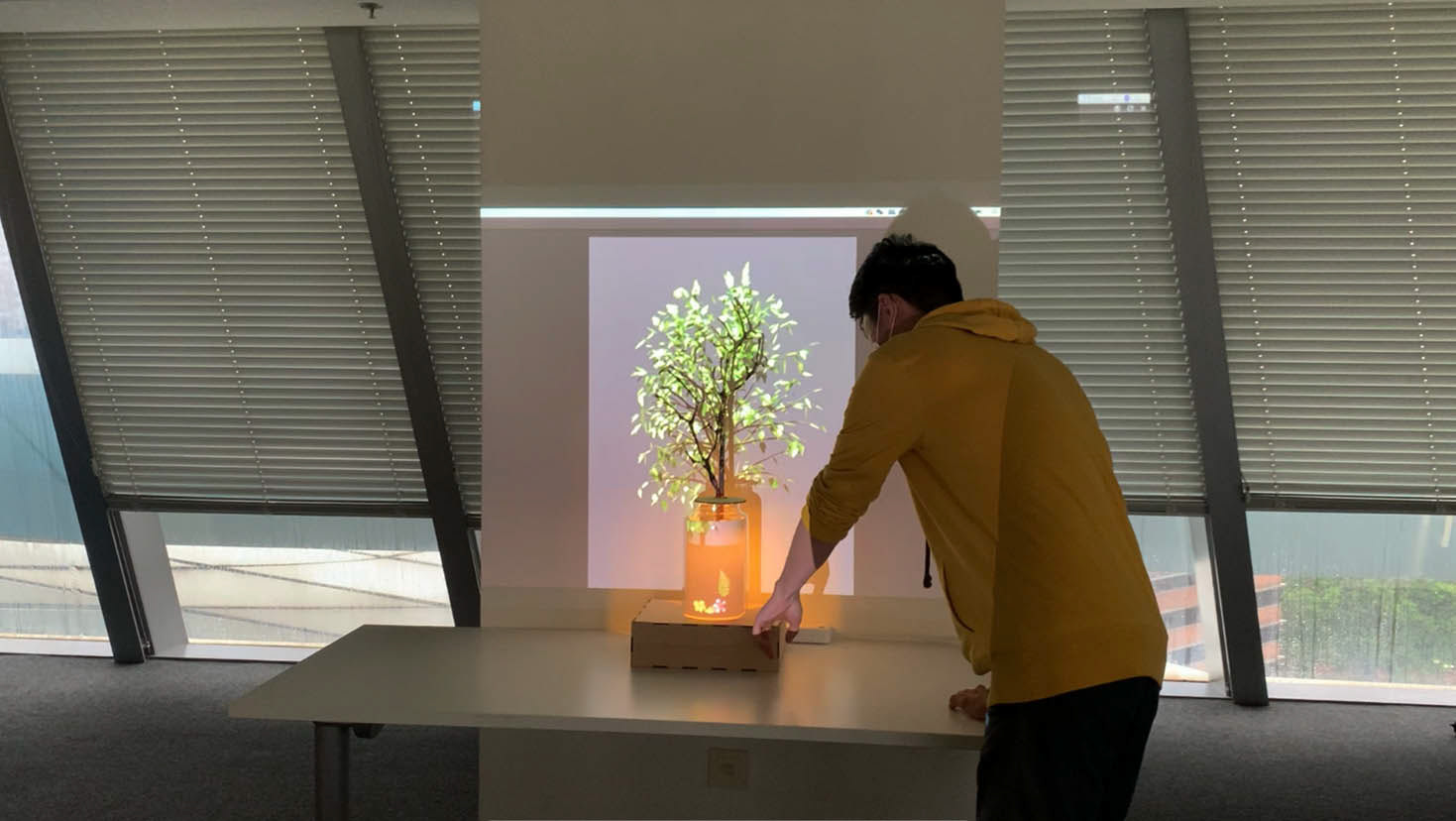
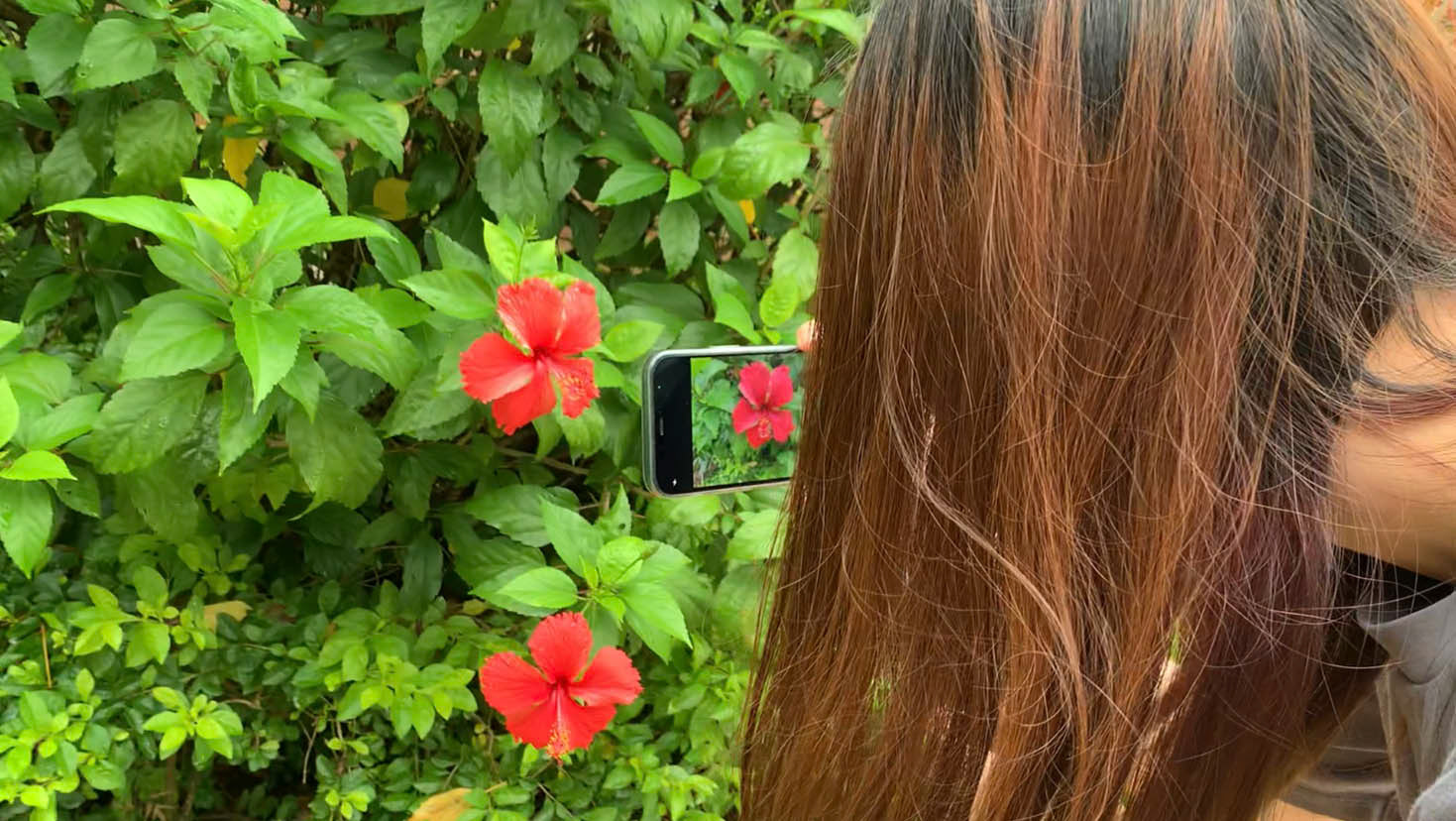
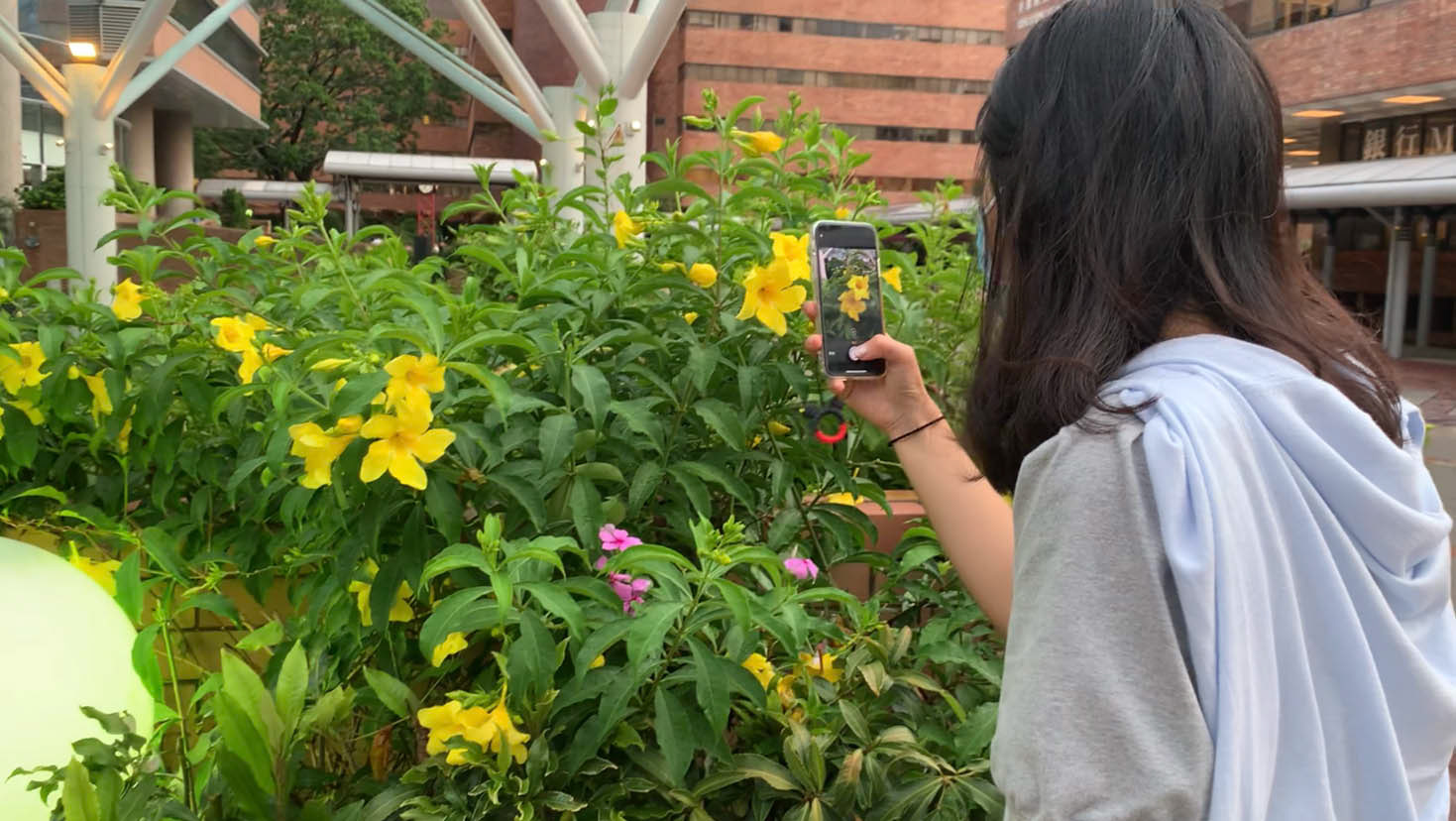
Key Findings
Human-nature Relationship
1. The collection behavior has successfully promoted the sense of closeness to nature.
2. The design has made participants pay more attention to the nearby natural environment and green space, accompanied by reflection on previous lack of notice.
3. The experience has increased participants’ sense of connectedness to nature.
Behaviour Observation
1. Participants considered leaves relatively normal and they tended to collect flowers or distinguished plants.
2. Participants have more expectations on the instant feedback after collecting on the phone.
3. Participants would be attracted by other natural things during the experience, such as bees, raindrops.
Design Metaphor
1. The metaphor of Jar is easy to be understood as the mapping of collection behavior.
2. The virtual and tangible jars are well mapped.
3. The feedback on the jar maps with the collecting behavior.
4. The growth of the tree is also well mapped with collecting behavior.
Design Quality
1. The current design cannot help establish an emotional bond between participants and nearby nature.
2. The design achieves the purpose of stimulating reflection.
3. The aesthetic value contributes to the willingness of sustained experience.
4. The restorative effect is an important quality.
The project report including detailed research process and discussion:
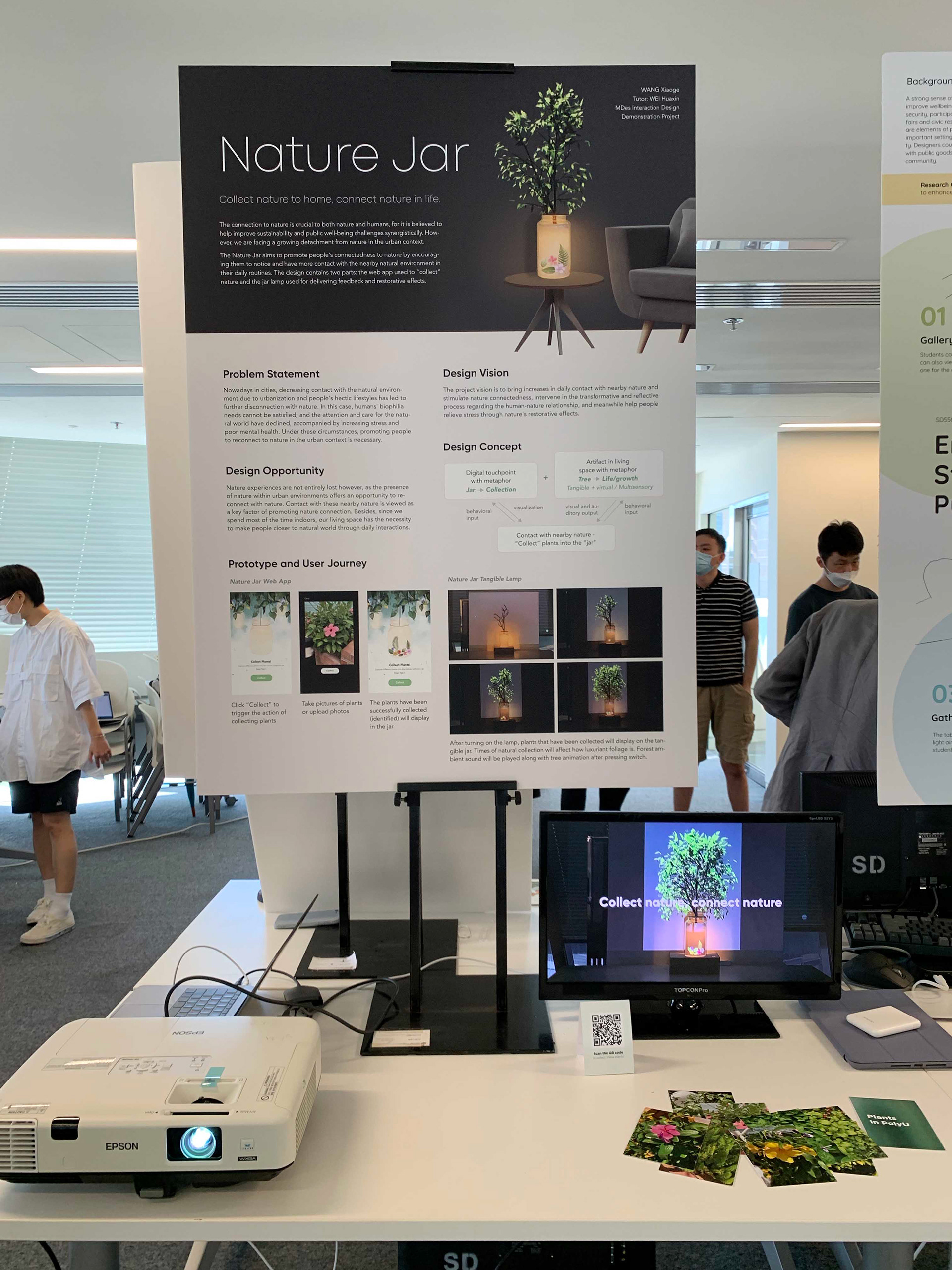
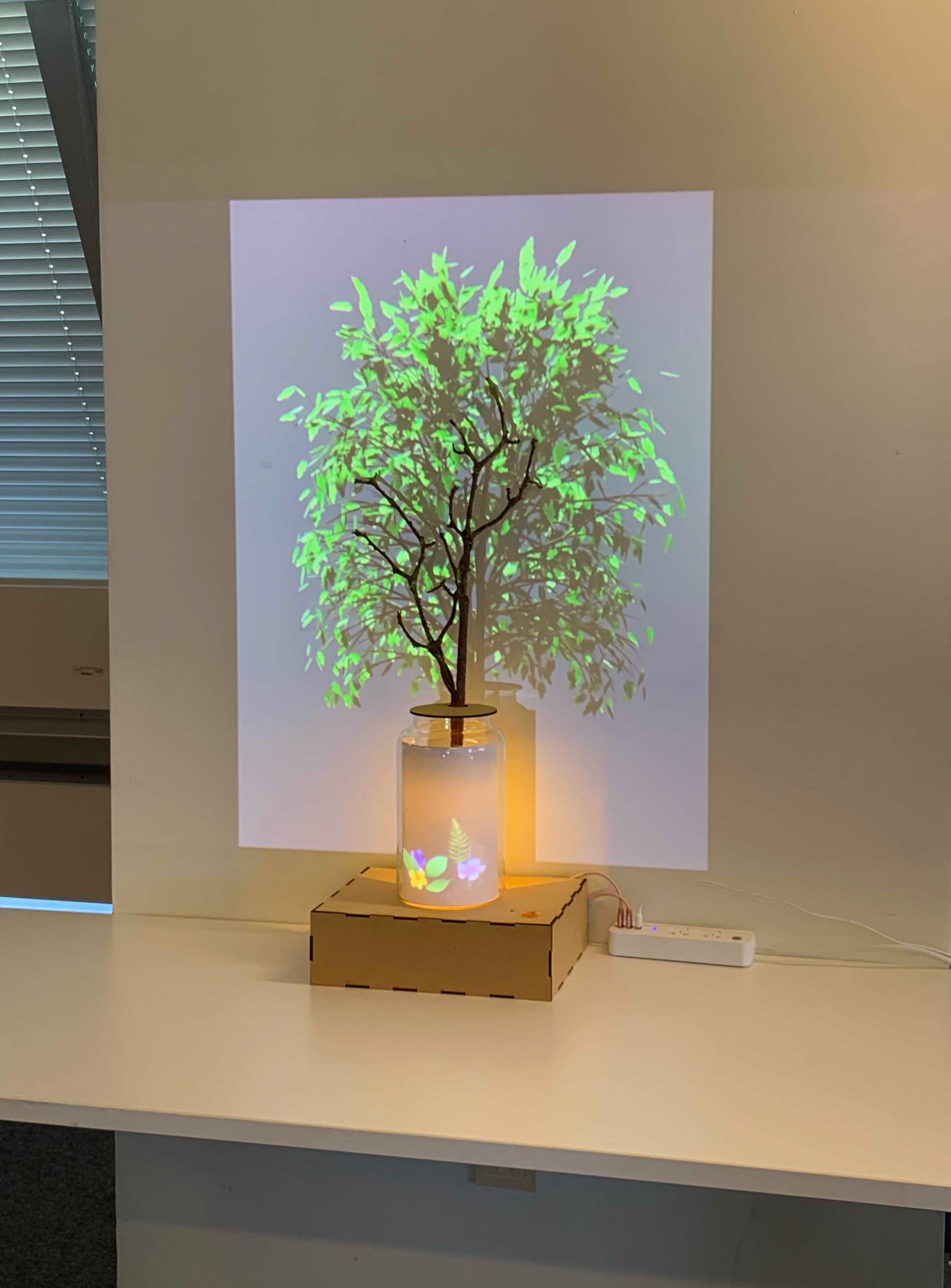
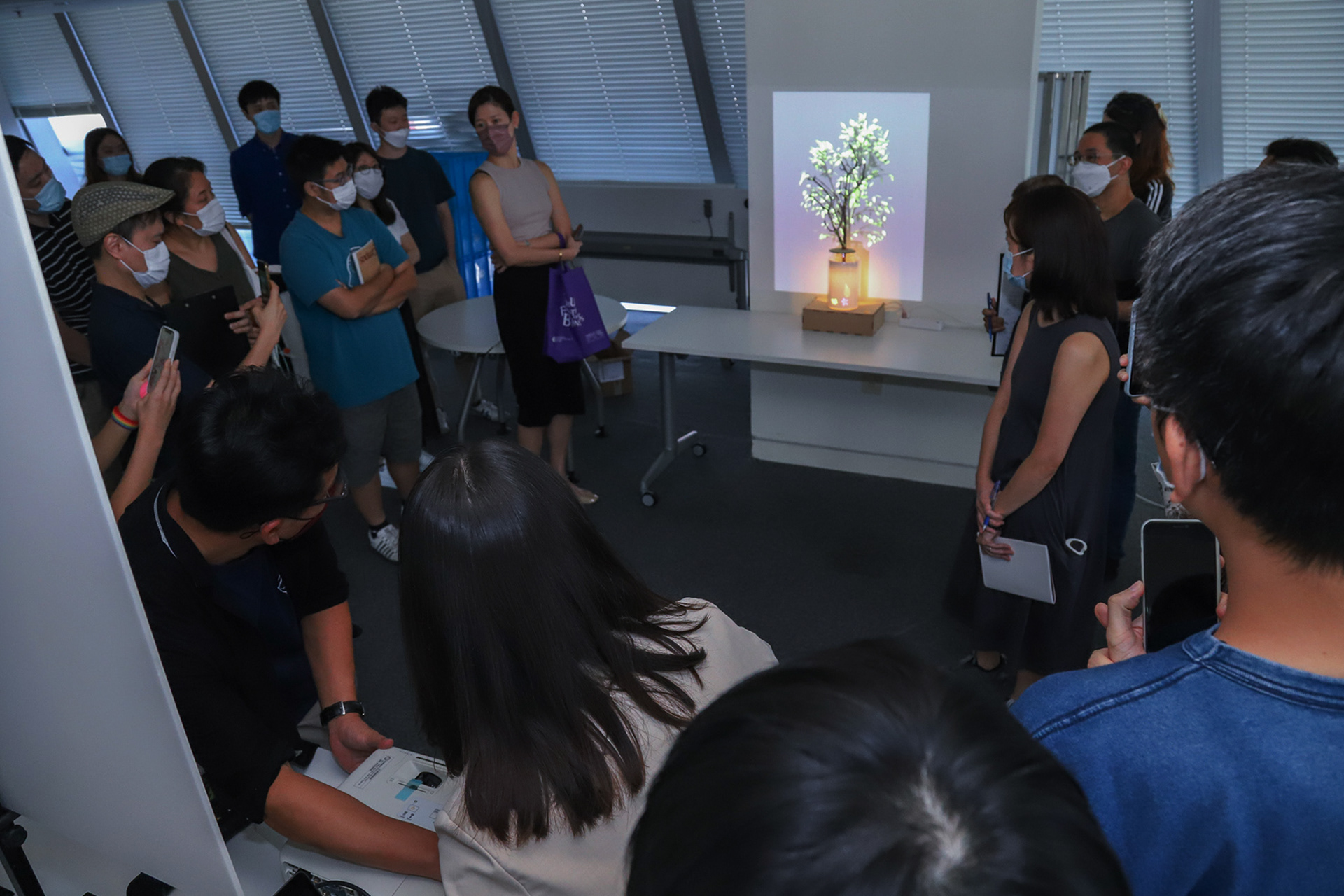
PolyU Design Exhibition
